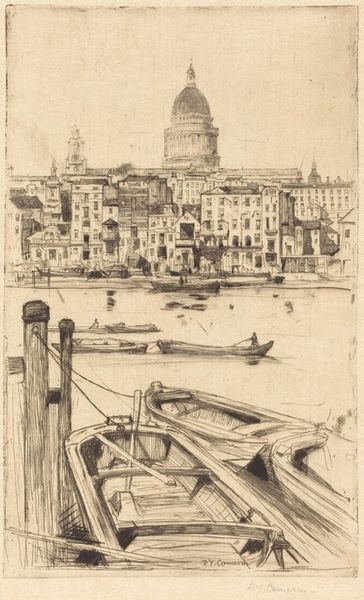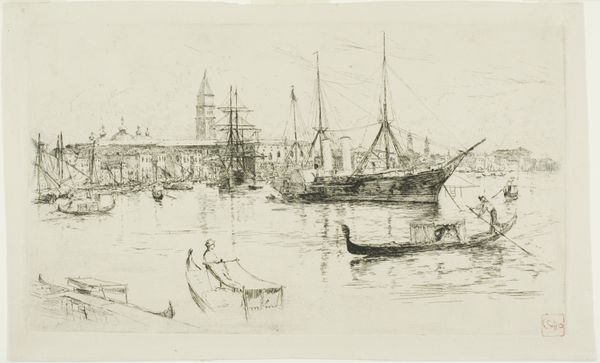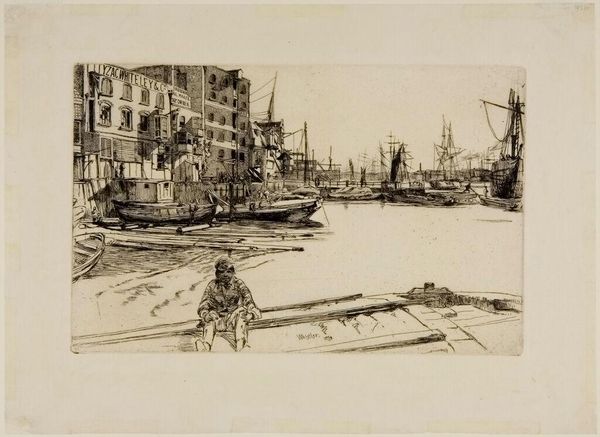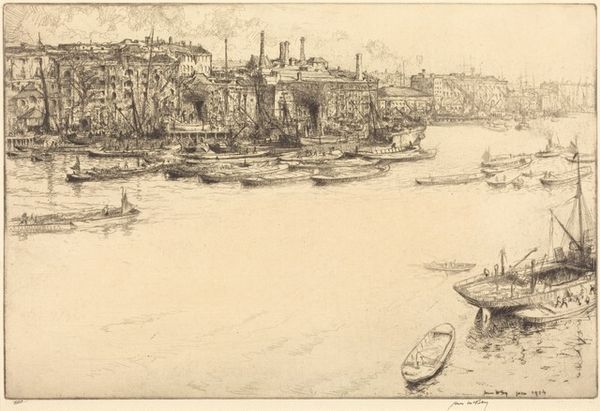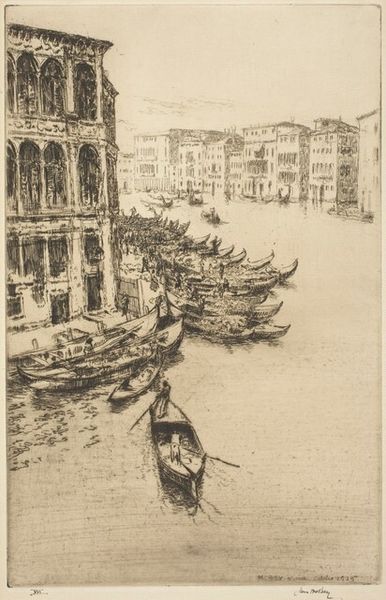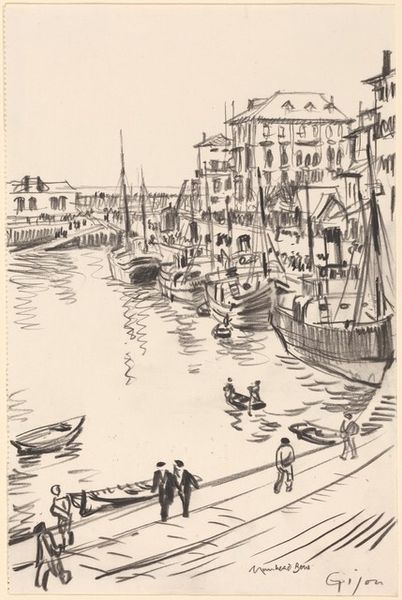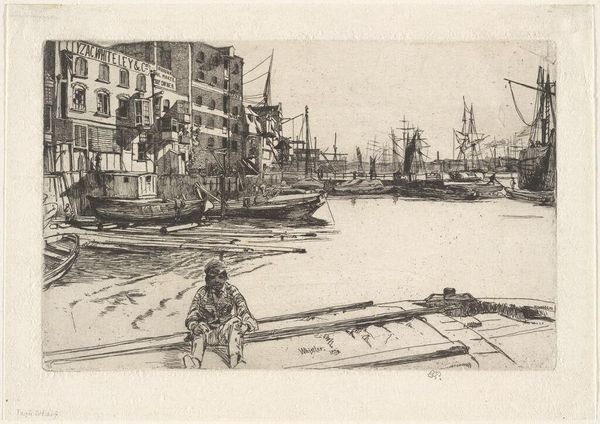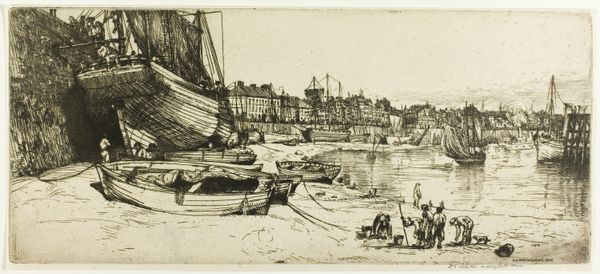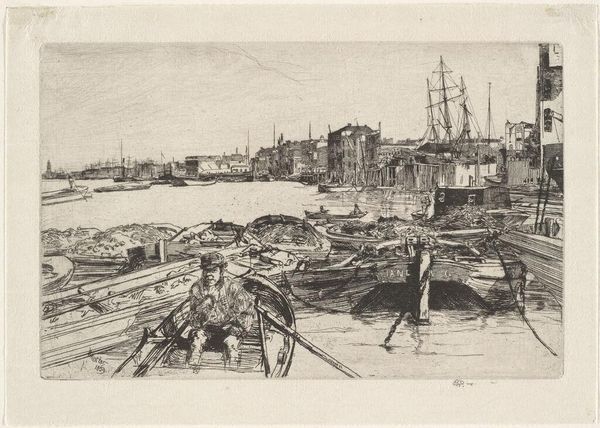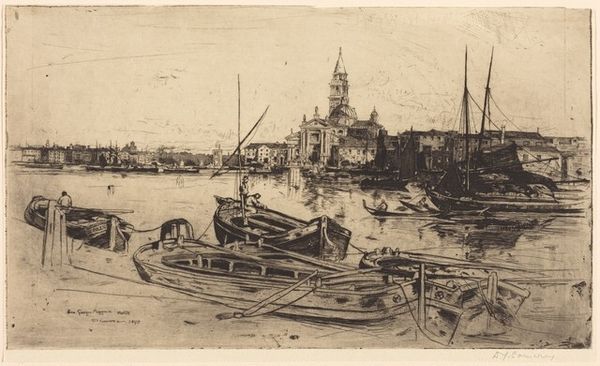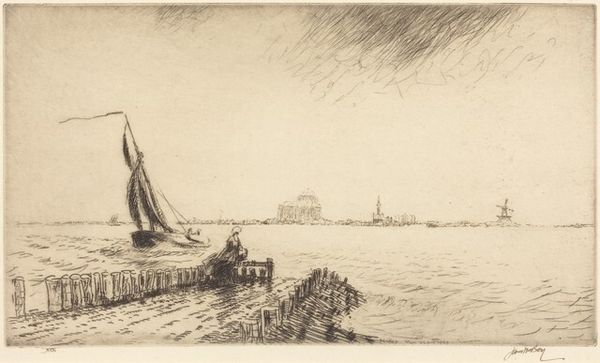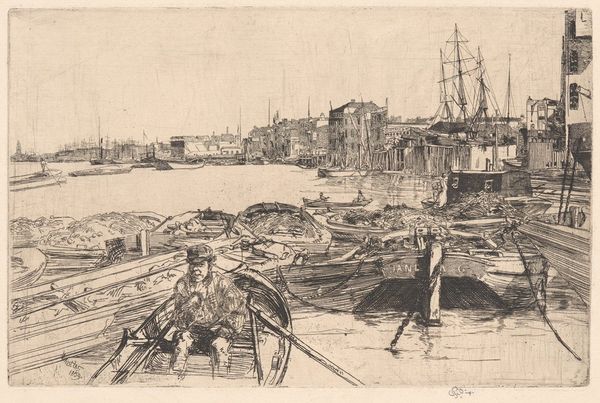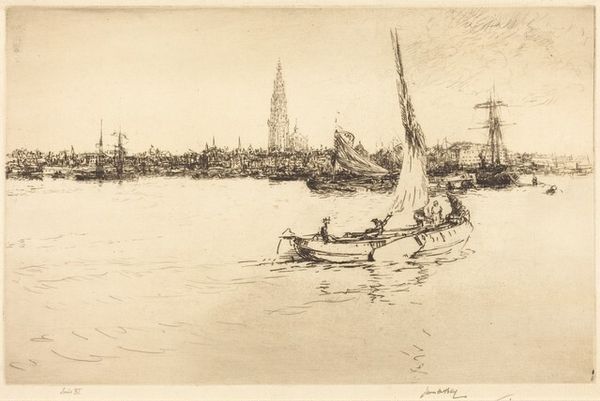
Copyright: National Gallery of Art: CC0 1.0
Curator: James McBey's "A Regatta on the Grand Canal," created in 1925, offers us a glimpse into a vibrant Venetian scene. Editor: It's remarkably active! My immediate sense is a buzzing, almost chaotic energy contained by this delicate line work. I can almost hear the shouts and laughter. Curator: Indeed. McBey was a master etcher. Note how he employs ink to construct layers of meaning here. Think about Venice at this time – a nexus of international travel and tourism. These regattas were potent symbols of Venetian identity. Editor: The print medium feels incredibly relevant to that circulation and proliferation. These could be reproduced easily and spread widely, consumed by many hands and eyes. Was McBey commenting on Venice becoming a sort of picturesque brand, packaging itself for external consumption? Curator: That’s an interesting point. Considering the wider historical context, the post-World War I era saw a rise in nationalistic sentiments and cultural commodification. This image, with its deliberate nostalgia, may play into a construction of Venetian heritage for consumption in a world recovering from great upheaval. Editor: It's fascinating how the gondolas, each packed with figures, become almost abstract shapes from a distance, a kind of material study in form and density. Look at the precision with which he rendered the buildings versus the suggestive sketching of the figures. Curator: Absolutely. He’s using the cityscape as an anchor for the scene. The light reflecting off the water contributes to that airy atmosphere so typical of Venice, while the people depicted serve as a reminder that history isn't just about stones and monuments, but about lives lived and traditions upheld. Think too of how these regattas upheld certain patriarchal traditions in the face of budding movements toward greater freedoms. Editor: Examining the etched lines so closely reveals the intense labor involved in producing what, at first glance, appears to be an airy, spontaneous work. The commodification of Venice relied so much on the intense, often unseen, work to produce and move its images and wares. Curator: A keen insight! Ultimately, McBey gives us not just a scene, but a multifaceted reflection of Venice at a pivotal point in history. Editor: Agreed. Thinking about how it's produced makes me see Venice through the materiality of its representations, adding even more to this picture.
Comments
No comments
Be the first to comment and join the conversation on the ultimate creative platform.
